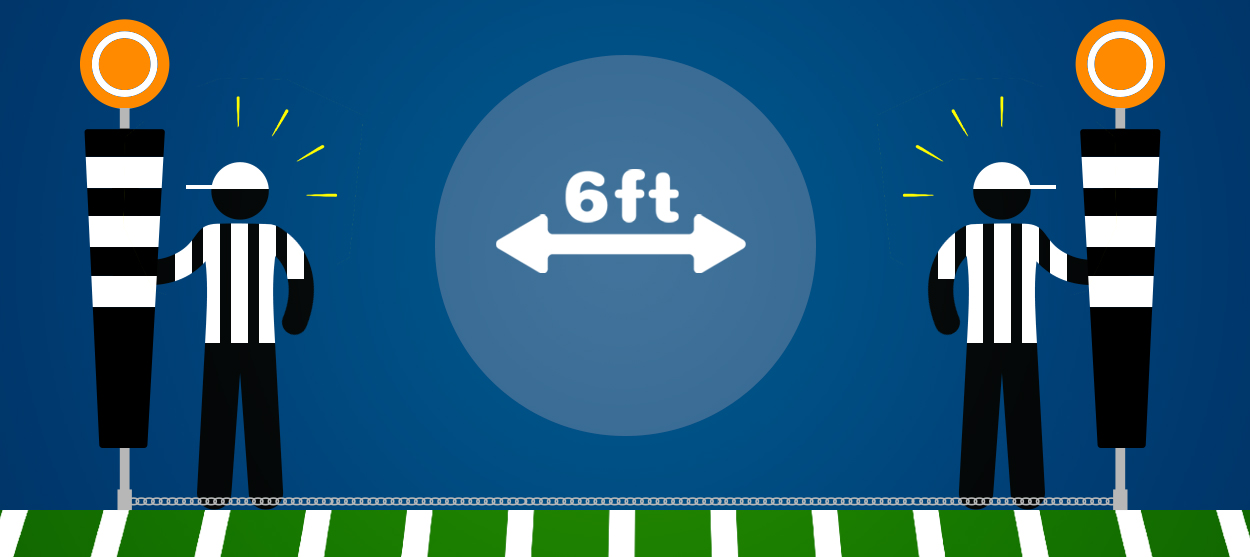The most important legacy of the NFL season may have nothing to do with football
How the league protected itself — and taught the CDC something about COVID-19 in the process


Like a lot of big businesses over the years, the National Football League has cultivated an image of inevitability, as dependable as church on Sundays.
This past season tested that notion like few before it. But there came the confetti, showering the field at Tampa's Raymond James Stadium on Sunday, and with it the realization that the league had made it past Week 21 of another season, without interruption or drastic measures, like an NBA-style bubble.
The league couldn't just bulldoze its way to the Super Bowl this time, though. It tapped its vast resources, spent millions retrofitting facilities, and established protocols before the season that players and personnel were required to follow. And then, around the midway point, the league made a pivot that would make Derrick Henry jealous.
The Week
Escape your echo chamber. Get the facts behind the news, plus analysis from multiple perspectives.

Sign up for The Week's Free Newsletters
From our morning news briefing to a weekly Good News Newsletter, get the best of The Week delivered directly to your inbox.
From our morning news briefing to a weekly Good News Newsletter, get the best of The Week delivered directly to your inbox.
It's a part of the season that could easily get lost in the fog of all this COVID-19 miserableness. But schools, health-care facilities, and workplaces around the country shouldn't forget it.
Late last month, the CDC released a study it jointly co-authored with several of the NFL's leading medical experts based on a trove of data gathered from players and personnel over the first three months of the season. The news got buried under the avalanche of Super Bowl-related headlines. But it contained several eye-opening revelations.
One was how close things came to completely spiraling out of control in early October. Outbreaks were cropping up on half a dozen teams, multiplying rapidly, and testing the league's established COVID protocols.
When football started up again in July, those protocols were roughly in line with the CDC's widely shared wisdom around reducing transmission: mandatory masking, physical distancing, frequent handwashing, and regular testing. In-person meetings had to be small and socially distanced, plexiglass dividers went up in the locker rooms, and the buffet table was closed. The league's definition of "exposure" matched that of the world's foremost disease specialists: being within six feet of an infected person for more than 15 minutes. If that was the case, the exposed person had to quarantine, whether it was an assistant strength coach or Tom Brady.
A free daily email with the biggest news stories of the day – and the best features from TheWeek.com
What was unique relative to most office settings is the NFL didn't have to rely on contact tracing the hard way. Thanks to a deal with a company called Kinexon, it required all players and personnel to wear a smart sensor while they were at a team facility.
The devices captured the minutes and seconds of interactions between persons within 6 feet of each other. Early in the second month of the season, the NFL started evaluating that data to try to understand why cases were spreading faster than before.
That was the second big revelation of the study. The data revealed there were at least seven instances of likely transmission between persons who had zero interactions exceeding 15 minutes from within 6 feet of another person with COVID-19. There were multiple other instances of transmission occurring during especially brief (less than five minutes) unmasked interactions in small meeting rooms or eating in the cafeteria.
Seeing this, the NFL quickly changed its course. It outlawed all in-person meetings, closed the cafeterias, limited locker-room access, and required masks at all times during practice. Crucially, it no longer considered exposure to only mean "within 6 feet for more than 15 minutes." Exposure was exposure regardless of the duration.
The data illuminated other blind spots in the CDC's protocols, offering contextual clues that helped clubs further reduce their risks. Prolonged interactions in well-ventilated settings with proper mask use seemed to be of low risk, but even short car rides with partial mask use were dangerous.
What the NFL discovered about transmission wasn't rocket science. And let's be honest, the austere reaction doesn't easily translate to many settings outside of professional sports. The biggest lesson of the NFL's 2020 tribulations is that it saw results after it started taking the transmissibility of the virus more seriously — even more seriously than the CDC.
The final revelation was that the study reached daylight at all. It's absolutely the case that the NFL has not earned a strong reputation for transparency on matters related to race, domestic violence, or dangerous head injuries. But considering the divisiveness of the pandemic, and the numerous factions that make up the NFL's constituency, the league deserves credit for not only listening to the guidance of health experts but making data-supported adjustments, and then sharing its experiences with the public.
In the end, the league administered more than 630,000 tests, constructed an airtight contact-tracing apparatus, and applied innovative technology to pandemic control. It got its reward Sunday night, football safe in its status as one of the most dependable things in American life.
What did we get? An entertaining season, and some overdue knowledge that could help get us out of this calamity.
Zach Schonbrun is a senior editor at The Week and author of The Performance Cortex. His work has also appeared in The New York Times, Bloomberg Businessweek, Vice, and The Washington Post.
-
 7 bars with comforting cocktails and great hospitality
7 bars with comforting cocktails and great hospitalitythe week recommends Winter is a fine time for going out and drinking up
-
 7 recipes that meet you wherever you are during winter
7 recipes that meet you wherever you are during winterthe week recommends Low-key January and decadent holiday eating are all accounted for
-
 Nine best TV shows of the year
Nine best TV shows of the yearThe Week Recommends From Adolescence to Amandaland
